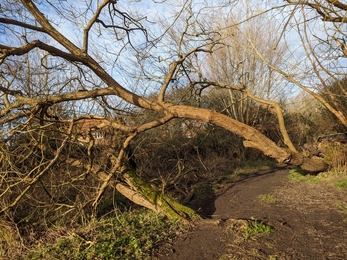Weekly wild news from our reserves – 24th Feb 2023
Jay in tree, Robert Quadling, Lound Lakes
The ability to watch wildlife via remote cameras has allowed us precious close-up glimpses of natural behaviour. This week, we’ve enjoyed watching a great white egret at one of the newly created scrapes at Dingle Marshes, and a buzzard coming to rest for a moment at Peto’s Marsh.
Great White Egret at Dingle Marshes (https://youtu.be/AbiTrx3qXwY)
Great White Egret at Dingle Marshes
Buzzard at Peto's Marsh, Carlton Marshes (https://youtu.be/61m8rgJ5yBA)
Buzzard at Peto's Marsh, Carlton Marshes
Visitor and wildlife benefits for Hen Reedbeds and Reydon Wood
North East Suffolk Sites Manager has been at our Hen reedbeds and Reydon Woods nature reserves to look at the work our reserve team and volunteers have been doing to enhance these special places for both visitors and wildlife.
At Hen, we’ve been clearing back the reeds at the edge of the mere to make sure that they do not encroach and swallow up the open water. The team used an amphibious vehicle, a Truxor machine, for this tricky task. It also means that visitors get a better view of the mere and of the wildlife, such as bitterns and kingfishers, that feed here.
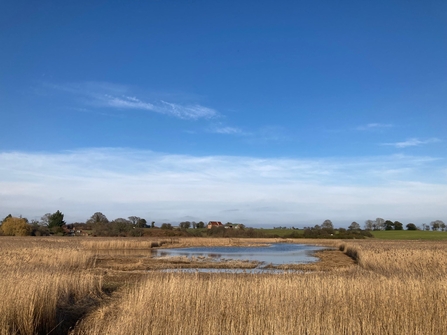
Hen reedbeds mere opened up by the Truxor machine, Matt Gooch
On the other side of the road, the Softrak has been cutting further areas of reedbed to provide a varied structure for wildlife and creating new viewpoints into the reedbeds for visitors.
Hen reedbeds, Matt Gooch
There has been some super coppicing work by the volunteer team at Reydon Wood this winter. The team have made use of the brash to create fencing to try to keep browsing deer away from the recently cut coupe. If deer eat the emerging shoots in the spring, they could kill the trees, so it is important that deer are excluded as the trees grow back.
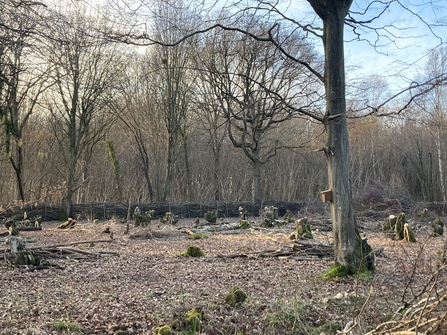
Coppice coupe at Reydon Woods, Matt Gooch
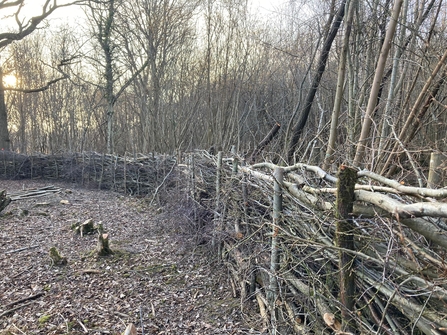
Brash fencing at Reydon Woods, Matt Gooch
Path maintenance at Lound Lakes
Andrew Hickinbotham and his team of volunteers have been removing blackthorn along the side of the public path to maintain clear access. However, it is being encouraged to encroach into the field for cover and nesting bird habitat. These scrubby areas are excellent for species such as linnet, blackcap and yellowhammer.
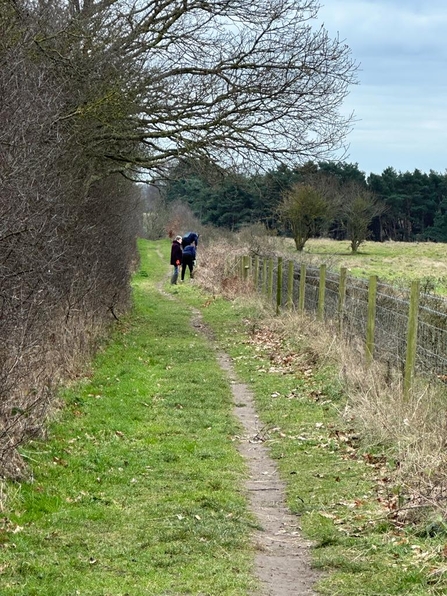
Volunteers keeping the path clear at Lound Lakes, Andrew Hickinbotham
Also at Lound Lakes, our volunteer warden and butterfly recorder Robert Quadling took these gorgeous photos of a jay and a redwing.
Volunteer warden Roy Richardson also spotted this hen pheasant, brilliantly camouflaged against the dead leaves at Lound Lakes.
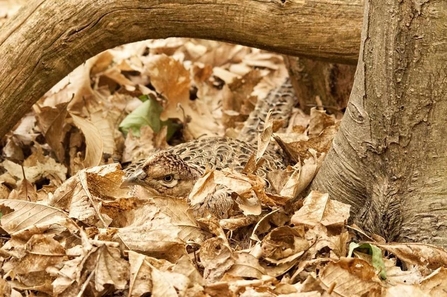
Hen pheasant, Roy Richardson, Lound Lakes
Stag beetle pyramids and bug hotels in Woodbridge
Our Engagement Officer, Charlie Zakss, has been working with Year 4s at Woodbridge Prep to build three stag beetle pyramids and construct a huge invertebrate hotel while learning all about beetles with Jetty Lane Community Group and Deben View Care Home. All thanks to community outreach funding from Suffolk Coasts and Heaths Area of Outstanding Natural Beauty.
Year 4, Woodbridge Prep, Charlie Zakss
Short eared owl
What a cracker! This super shot of a short eared owl at Trimley Marshes is by Carl Earrye.
Short-eared owls mainly hunt during the daytime, flying low over grassland and saltmarshes where they feed on field voles and small birds. They are always a delight to see with those fabulous bright eyes and markings.
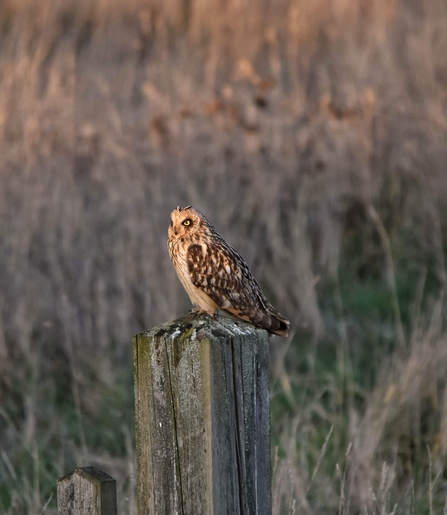
Short eared owl at Trimley Marshes, Carl Earrye
Framlingham Mere
Warden Rachel Norman has removed a fallen willow so that tractors will be able access the mere to mow it in late April. The nature of the willow tree’s position required the use of a winch for safety reasons. Framlingham Mere is full of lovely old willows, so we try to preserve them where possible, but sometimes it is necessary to pollard or reduce them down to maintain access and to keep the area safe for visitors.
Combs Wood
Woodlands Warden Alex Lack and Intern Anneke Emery have been working with volunteers at Combs Wood to finish the coppicing for this season. The volunteers have been laying brash over the coppice stools to protect them from browsing deer.






